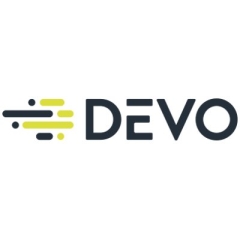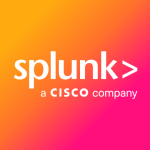What is our primary use case?
Our primary use of Devo is as a SIEM, and then as a big-data platform. We do store a lot of data centrally, using the solution, and then we analyze it. The main purpose of the analysis is for security, to detect attacks, abnormalities, and to get an overall view of the health of the network.
We deploy it on-premise. Devo mainly deploys in the cloud, but that's just not possible with our security policy.
How has it helped my organization?
We didn't have a proper SIEM platform before, so just having Devo is really a big improvement. We are in the initial phase, but it does make us look at the data differently because we can access it really fast and with ease. The benefit is going to come with more time with the platform. We'll be able to do things we haven't done before, and think outside the box with the platform, because the solution can do things fast. We can experiment. We're now thinking more about more experimentation. Instead of thinking of all the limitations to what you can do with the platform and where you cannot go, it's now open. What would we want to do? We don't have that fear that we will hit the wall.
We have retention policies set globally. We used to have access to the same amount of data before we started with Devo, but that data was not centralized. So the ability to access the old data hasn't really changed. We always had the data. But what has changed is the ease with which we can access this data, the speed, and the ability to be able to correlate this data.
The main result of the centralization is the correlation we can now do. We had a lot of sources with logs, but nobody was centralizing them. Now we have the visibility. By making Devo the central platform and the only platform, we're trying to standardize how the sources and logs work. That means we only have one interface to configure on the sources. We can make instructions that are quite easy to follow for everybody, and which will probably not change over time. Doing this, we break the barrier of logging being difficult to configure and we reduce the issue of destinations changing all the time or of having to change how the data is structured. Even during the deployment process, this really brought way more visibility than we had before. Every day that we're working with the platform, we see problems that nobody ever thought about. It has definitely created a lot of visibility for us.
And with the Devo platform, we can also create long-term use cases. We were not able to do that before because we didn't have the correlation and the data in the same place.
Also, we can now get quite detailed data about communication between different nodes. Sometimes you don't see security incidents right away, and sometimes you have to go back. Now, we can go back three months to a specific date and do a really detailed analysis of what happened. Before, we would have to go to five, 10, or 15 different sources, extract the data and then put it together in a different platform.
In addition, if we're looking for abnormalities, the longer we have data, the richer and more detailed our model is for what normal behavior is. We can then detect the anomalies more precisely.
Finally, our MTTR has already gone from days to hours. Before we might have had to go to three or four departments and talk to three or four different people to get the logs and manually analyze them. Now, it's a matter of minutes or an hour and we can get a clear picture of what's going on and what to do next. It is a huge change compared to what we had before.
What is most valuable?
The speed of the platform is one of its most valuable features. The solution is designed differently so it doesn't really matter how far back you go, the speed's going to be the same.
We use its real-time analytics, which are very good. It sends alerts; we have some alerts that update every five minutes, or whenever the data comes in. It's really fast. We can work on really large data sets and have a resolution in minutes for these alerts. It's great. It's not actual, real-time because there is some delay before the logs come from the data collectors. But that's not a problem with the Devo platform. It's just how logs travel around here.
The user interface is really modern. As an end-user, there are a lot of possibilities to tailor the platform to your needs, and that can be done without needing much support from Devo. It's really flexible and modular. The UI is very clean. It makes sense for me, personally, the way it's set up.
The UI also has these little perks. For example, if you do queries and you set a certain time range which you need to reuse in different queries, instead of having to type it in every time there is quick access to all the time ranges you have been using. You can just pick the one you need, instead of typing in, say, January 22nd, 2020, from 15:35 to 15:45. You have quick access to whatever ranges you have already put in. I reuse these a lot and it saves a lot of time.
Another UI feature is that it does a type of pre-aggregation and pre-processing for you. Whenever you hover over certain parameters that can be filtered or adjusted, you get an overview of the top 10 values, with the percentages as well. Sometimes you just want to know what the ratio is between different sources. You don't have to do anything to get that. You just hover your mouse over where you would start setting it up and you can actually see the values right away.
It's full of these little surprises. It has something called CyberChef which is a really rich tool for manipulating IT-related data, IP addresses, encoding, and the like. CyberChef is an open-source tool that I sometimes use through its web interface. But you can actually use it directly in the Devo tool, so that's another big bonus. It looks like Devo thought, "Okay, people who use our platform may use this tool as well. It's open-source, so we'll just include it." It's integrated, creating an interface between them.
And one of the biggest features of the UI is that you see the actual code of what you're doing in the graphical user interface, in a little window on the side. Whatever you're doing, you see the code, what's happening. And you can really quickly switch between using the GUI and using the code. That's really useful too.
Activeboards is another really good feature. With them, you can actually see the code as well. It's really powerful. Sometimes with this type of software, there is a similar dashboard feature, but you're very limited in what you can do with it in the graphical user interface. And if you reach its limits, you have to call the vendor and let the vendor do it. But here, you can see the code. So if you want to go deeper, or if there's some feature that is not reachable with the GUI, you can write it yourself. The documentation is really good, so it's quite easy to do.
Activeboards' ability to build and modify dashboards on the fly is also powerful. We came to Devo from a different solution and, obviously, the users didn't want to change the way they use the platform. They required a certain workflow that is not in Devo. With Activeboards, we can recreate the exact workflow they are used to, without any difficulty. That makes it very easy for the user to switch to Devo. That's the power of the Activeboards. You can really change a lot of things. It's very modular.
What needs improvement?
I don't use the Activeboards' visual analytics that much. I just look at the data, most of the time. The Activeboards feature is not as mature regarding the look and feel. Its functionality is mature, but the look and feel is not there. For example, if you have some data sets and are trying to get some graphics, you cannot change anything. There's just one format for the graphics. You cannot change the size of the font, the font itself, etc. You get a graphic that works well in some cases, but in other cases, the numbers are too small and you cannot do anything about it. Overall, the graphic presentation of data is okay, but I miss the basic functionality of being able to change how things look.
For how long have I used the solution?
We've been using Devo for about two months. (as of 02/2020)
What do I think about the stability of the solution?
I don't remember a single issue with the platform in the two months we've used it. There has been no downtime or data missing, at least during my work hours, eight hours a day, Monday to Friday. Even though it's a new product, I feel it's very mature. There are very few bugs in the platform, even if it's evolving all the time.
What do I think about the scalability of the solution?
The scalability is very good. We had some assessments from Devo and they said, "Oh, for this amount of data at the moment you will need this and this." We were kind of skeptical because the amount of hardware they asked for was way less than the old platform that was running some of the data. But I've seen some performance reports and we're very far from reaching any limits on the platform at the moment.
In our office we're not using that much data, but our colleagues in sister company are using way more than we od and they are happy. Having gone through the implementation I know a little bit about how the architecture works and I think it's built to be scalable.
In the future, over the next 12 months, we'll be using it more in terms of volume of data and how much we're using the platform. We are not utilizing very much of what it can do. We use it a lot in daily workflows, but we are not using it to the full potential yet.
How are customer service and technical support?
The tech support is excellent. We used some Agile methodology to install the platform and we had some non-standard channels in our organization, like Slack or Microsoft Teams, where we used instant messaging communication with the team, and their response times were very fast.
The support was very professional but very flexible. We had defined some requirements at the beginning of the project, which were included in the contract, but then we realized that we wanted to change them. We were a little bit afraid that because they weren't in the contract it would not be possible, but that wasn't a problem at all. There were no questions asked.
Which solution did I use previously and why did I switch?
We used Splunk prior to Devo. We switched because we were not happy with Splunk. We felt that the platform wasn't built properly and the support was very problematic and expensive. We had an RFQ process, a tender, and Splunk was in the game since it was our current platform. But we were just not happy with them even during the tender. So we decided that we were going to change.
The differences between Splunk and Devo are performance, ease of use, the functionality, and the approach of the company. The latter includes how they do support and development. Devo, overall, is a better solution for us.
How was the initial setup?
Most of the work was done by the Devo team. The work from our side was to get the hardware and the networking ready and to configure the sources. The configuration of the sources was quite straightforward. The main system is not highly complex.
We're going to be doing our own maintenance, level-one and level-two support. Our people are going to training. Devo uses many standard components and standard interfaces. There is no big, proprietary software barrier. It's quite flexible too, in that we could choose our own operating system. They recommend Ubuntu, but in our corporation we run everything on Red Hat. There was no problem at all in this regard.
The hardware requirements were also very flexible, so we could have chosen whatever we wanted; what works for us. Everything was pretty straightforward. There were no issues. Setting up users and alarms — the configuration of the platform — was very easy too.
There were some bottlenecks on our side, but including planning, it took three to four months. The platform was ready in three to four weeks and deploying all our customizations, all our use cases and alarms, was another month.
The process required five people, including me. We had a project manager, as well as an OSS engineer who was responsible for the hardware and everything that we had to do in that regard — obtaining the hardware, network connectivity, etc. Two of us from network security were responsible for the goals of the platform, defining the use cases, and testing the platform. We also had support from the networking firewall team.
Maintaining the solution is less than half a full-time position. We have a team doing it, but nobody is directly dedicated to it. There are certain processes that that team follows so if we have an issue, we create a ticket and somebody from that team will sort it out.
Overall, we have 10 to 20 people using Devo across our organization. They are in security roles. Because we have a lot of data, some people use it for performance management, while other use it for fault management in the network for the devices. Management uses it to generate security-posture reports. At the moment, it's very security-oriented. So most of the users are security analysts in our group.
What was our ROI?
We have definitely saved time using Devo, but the greater visibility it gives us is really hard to quantify. Everybody's more effective, obviously. And the hardware costs are down compared to the other solution. Everybody feels it's a good value, especially in mitigating risk or attacks. With the greater visibility and the ability to aggregate and analyze data in a better way, we have better mitigation. We see the threats sooner or more in detail. We can do everything better.
What's my experience with pricing, setup cost, and licensing?
I'm not involved in the financial aspect, but I think the licensing costs are similar to other solutions. If all the solutions have a similar cost, Devo provides more for the money.
Because we are running an in-house solution, there is the extra cost for us, when compared to the cloud, in maintaining our own hardware, and the level-one and -two support we are doing. But we feel we won't need consultants in the future, which we needed with Splunk where we paid extra for a more defined platform and doing the work. Devo is very well-documented and the platform is very open.
Which other solutions did I evaluate?
There was a Splunk solution and Juniper branded product that we looked at, along with some open-source solutions.
What other advice do I have?
My advice is to go with scrum Agile method for implementing it. It really works. They're did really good at it.
The biggest lesson I've learned from using Devo is that it is good, functioning software. And there's really good support.
I'm so happy with the platform. I've seen it go from pre-production to production. I was very happy with it in pre-production and I thought, "Okay, maybe when we start loading all the data, the complete set, maybe it will be different," but it's not. It does what it says on the tin. It really works for us.
I rate Devo at nine out of 10. They could be a 10. If they pushed us a little bit harder at the beginning so we actually come up with a more detailed plan for the integration of our sources, that could have made them a 10.
It's an upstart company and we really see great potential with them. They're updating the platform and they're adding a lot of features, features that matter to us, without us actually telling them we need them. So I think they really understand the market. They understand how modern software should work and how people work. It's really refreshing. You feel you're not limited by the platform. You're only limited by your imagination.
Which deployment model are you using for this solution?
On-premises
Disclosure: PeerSpot contacted the reviewer to collect the review and to validate authenticity. The reviewer was referred by the vendor, but the review is not subject to editing or approval by the vendor.

















